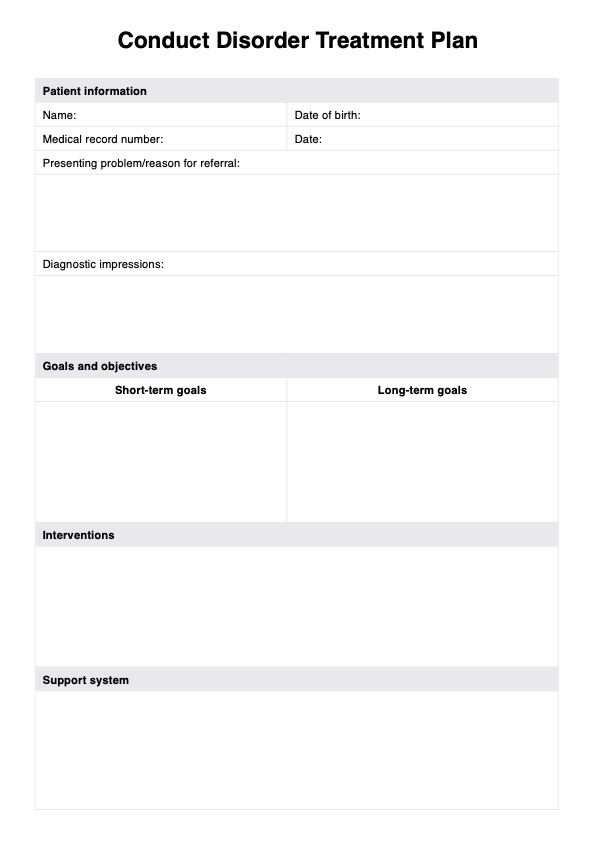A Conduct Disorder Treatment Plan is a structured and individualized approach outlining interventions and strategies to address the behavioral and emotional challenges associated with conduct disorder.

Conduct Disorder Treatment Plan
Use our Conduct Disorder Treatment Plan for structured documentation of your plan to address the client's behavior.
Use Template
Conduct Disorder Treatment Plan Template
Commonly asked questions
Treatment plans are crafted collaboratively, involving mental health professionals, individuals, and their families, tailored to address specific symptoms, triggers, and risk factors.
Components of this treatment plan may include behavioral interventions, family therapy, coping strategies, school support, and, if necessary, coordination with other healthcare providers.
EHR and practice management software
Get started for free
*No credit card required
Free
$0/usd
Unlimited clients
Telehealth
1GB of storage
Client portal text
Automated billing and online payments











